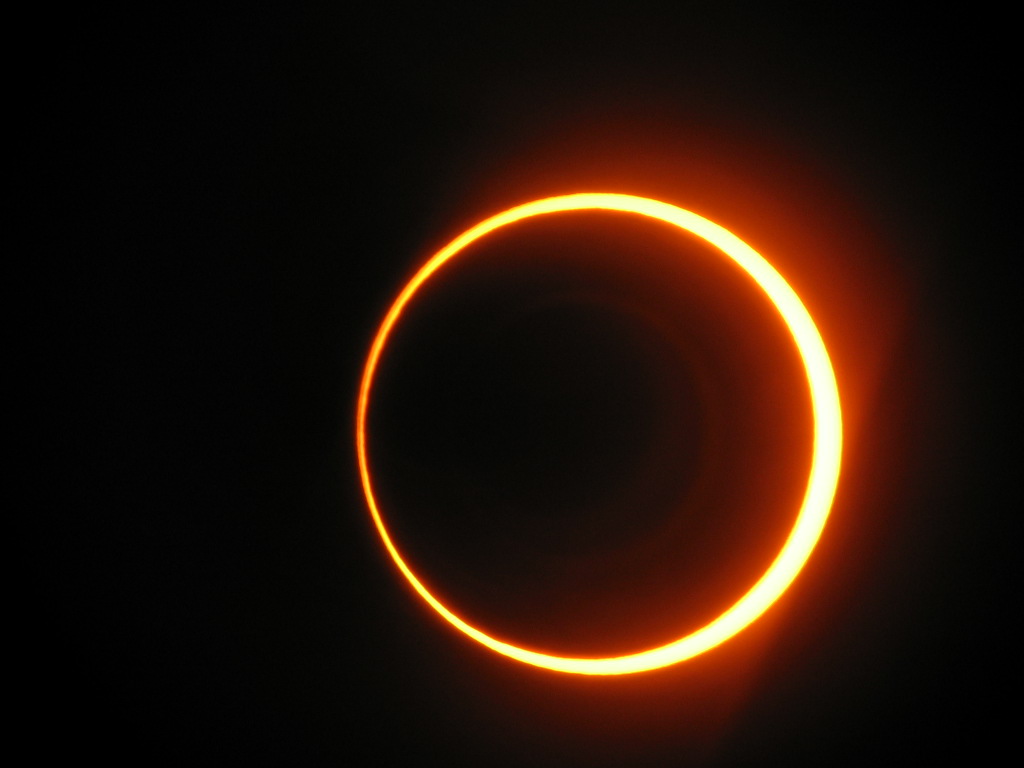A guide to the August 21 total solar eclipse: UBC hosts viewing
August 16, 2017

August 16, 2017

A total solar eclipse over the United States on August 21, visible partially across North America, has people excited. Here in the Lower Mainland, at eclipse maximum, we’ll see 87% of the Sun obscured by the Moon.
UBC astronomers are inviting members of the public to the Point Grey campus for free safe viewing of this rare event on the morning of August 21. In this Q&A, Professor Jaymie Matthews of UBC’s Department of Physics and Astronomy explains the context of solar eclipses, and why this one is attracting so much attention.
The Moon passes directly between the Earth and Sun so that it just barely covers the Sun’s bright disk, revealing the faint glow of the corona, the outermost solar atmosphere which is otherwise lost in the Sun’s glare. Our moon is 400 times smaller than our sun but it is also 400 times closer. The ratios of diameters and distances are so closely matched that the moon can block out the sun’s disk completely, without blocking out the beautiful halo of light around it. The Earth is the only world in our solar system which offers such a spectacle.
The Moon comes almost directly between the Earth and Sun each month. The key word is almost. The Moon’s orbit is tilted by about five degrees to Earth’s. For there to be a solar eclipse, the Moon must be at a point in its orbit which crosses the plane of the Earth’s orbit so the centres of the moon and sun line up to within less than half a degree (half the width of your pinky finger seen at arm’s length). Billiards players can appreciate how fine is this alignment of Sun, Moon and Earth on the astronomical pool table.
There is nothing special about this eclipse in an astronomical sense, but this eclipse will be visible across a heavily populated part of Earth. You must be in the right place at the right time to witness an eclipse. This time, hundreds of millions will be in the right place. The Moon’s inner shadow (umbra) cast on Earth is only about 100 kilometres wide and it races across the surface at almost 4,000 km/h. The path of this inner shadow is called the path of totality. To see a total solar eclipse, you must be on this narrow path. Many will place themselves on that path. Others in North America will see a partial eclipse.
For sun worshippers in B.C.’s Lower Mainland, the Moon will take a big bite out of the Sun. At around 10:22 a.m. PDT, 87 per cent of the Sun’s disk will be covered by the Moon. The eclipse will start about an hour before and will end about an hour after. If you’re on the path of totality, you’ll see the Moon’s shadow racing toward you across the landscape. Then, totality. The Sun becomes a black circle, ringed by a beautiful halo of light. A few bright stars and planets will appear in a twilight sky. Birds, confused by the early sunset, will settle into the trees to prepare for night. After a little more than two minutes, a sliver of sun emerges and totality is over. Short, but oh so sweet.
If you watch the eclipse on your own, never look directly at the Sun without proper eye protection. It’s also important never to look through a telescope or binoculars while it is pointed at the Sun, unless a trusted astronomer has equipped it with the right filter. Solar viewing glasses are sold by some stores but they are selling out fast. A safe filter to view the Sun by eye is #14 (or #13) arcwelder's glass, from a welding supply store. The Sun will look green through it, but you’ll be able to watch the partial eclipse safely. Remember that even a sliver of the Sun’s disk is bright enough to be dangerous if you look at it without proper protection.
Anywhere on the path of totality is where to have the total experience of a total eclipse. The path will start in Oregon and sweep coast to coast, to South Carolina. If you’re not lucky enough to be on the path of totality, you can still see an impressive show. Astronomers at UBC invite you to the Point Grey campus on eclipse morning to view the eclipsed Sun safely, through protective glasses and telescopes equipped with solar filters. We have 500 sets of glasses and we’ll be projecting the eclipse on a screen so you can take a selfie with the Sun safely. We hope to have a live feed from the path of totality so you can witness the total eclipse in real time. Astronomers and graduate students will be on hand to answer your questions about the Sun, Moon and the stars.
We honour xwməθkwəy̓ əm (Musqueam) on whose ancestral, unceded territory UBC Vancouver is situated. UBC Science is committed to building meaningful relationships with Indigenous peoples so we can advance Reconciliation and ensure traditional ways of knowing enrich our teaching and research.
Learn more: Musqueam First Nation